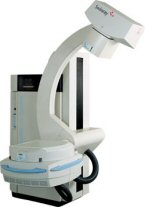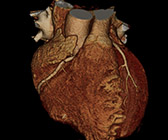What is an x-ray?
 X-ray is the oldest and most frequently used form of medical imaging. X-rays can produce diagnostic images of the human body on film or digitally that allow doctors to view and assess broken bones. X-rays are an important tool in guiding orthopedic surgery and in the treatment of sports-related injuries. X-ray may uncover more advanced forms of cancer in bones, although early screening for cancer findings requires other methods.
X-ray is the oldest and most frequently used form of medical imaging. X-rays can produce diagnostic images of the human body on film or digitally that allow doctors to view and assess broken bones. X-rays are an important tool in guiding orthopedic surgery and in the treatment of sports-related injuries. X-ray may uncover more advanced forms of cancer in bones, although early screening for cancer findings requires other methods.
What are the benefits of digital x-ray?
- Safer – less radiation than from conventional x-rays
- Faster – takes less time because the technology can preview your images in seconds
- More comfortable – because digital imaging technology is mobile, exams often can be performed upright rather than on an examination table
- Require fewer repeat exposures – because your doctor has the ability to highlight areas of interest and magnify images for a more detailed exam.
- Enhanced image quality
- More accurate
What are some common uses of x-ray?
- Assist doctors in identifying and treating of bone fractures.
- View, monitor or diagnosis joint injuries and infections, arthritis, artery blockages, abdominal pain.
- Detection and diagnosis of cancer, although usually computed tomography (CT) or MRI is better at defining the extent and the nature of a suspected cancer.
How should I prepare for an x-ray?
There is no special preparation required for most bone x-rays. You may be asked to change into a gown before your examination and remove jewelry, eyeglasses and any metal objects during the exam.
Women should always inform the technologist if there is any possibility that they are pregnant.
What can I expect during this procedure?
A x-ray exam usually takes five minutes to half an hour.
- The technologist positions you on the exam table and places a film holder under the table in the area of the body to be imaged.
- Pillows may be used to help you hold the proper position.
- Then the technologist steps behind a radiation barrier and asks you to hold very still, without breathing for a few seconds.
- The x-ray equipment is activated, sending a beam of x-rays through the body to expose the film.
- The technologist then repositions you for another view, and the process is repeated as necessary.
- When your x-rays are completed you will be asked to wait until the technologist checks the images.
What will I experience during an x-ray?
- X-ray imaging is painless.
- Some discomfort may result from lying on the table, a hard surface that may feel cold.
- Sometimes, to get a clear image of an injury such as a possible fracture, you may be asked to hold an uncomfortable position for a short time. Any movement could blur the image and make it necessary to repeat the procedure.
For more information on this topic, please visit www.Radiologyinfo.org.


 X-ray is the oldest and most frequently used form of medical imaging. X-rays can produce diagnostic images of the human body on film or digitally that allow doctors to view and assess broken bones. X-rays are an important tool in guiding orthopedic surgery and in the treatment of sports-related injuries. X-ray may uncover more advanced forms of cancer in bones, although early screening for cancer findings requires other methods.
X-ray is the oldest and most frequently used form of medical imaging. X-rays can produce diagnostic images of the human body on film or digitally that allow doctors to view and assess broken bones. X-rays are an important tool in guiding orthopedic surgery and in the treatment of sports-related injuries. X-ray may uncover more advanced forms of cancer in bones, although early screening for cancer findings requires other methods. 
